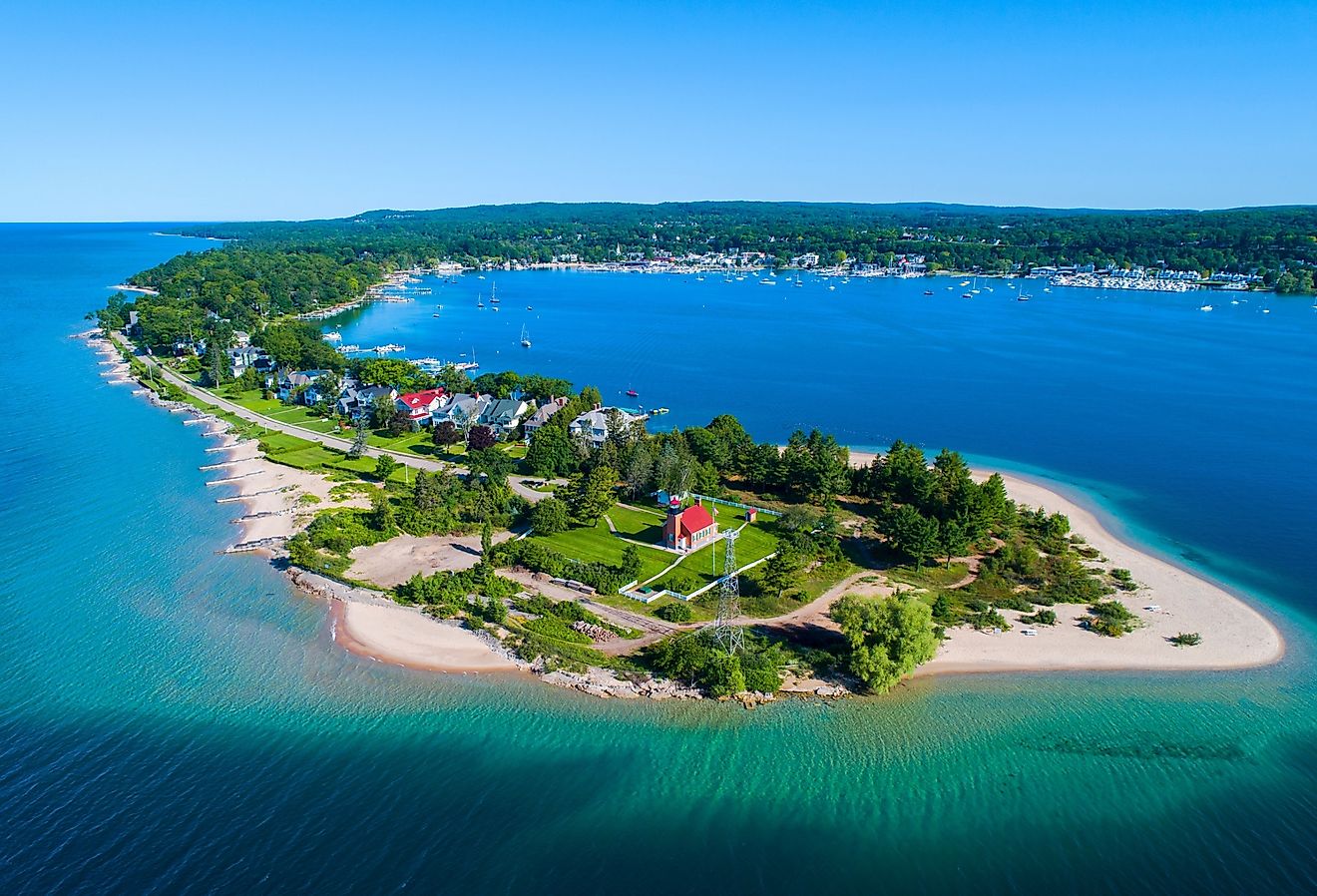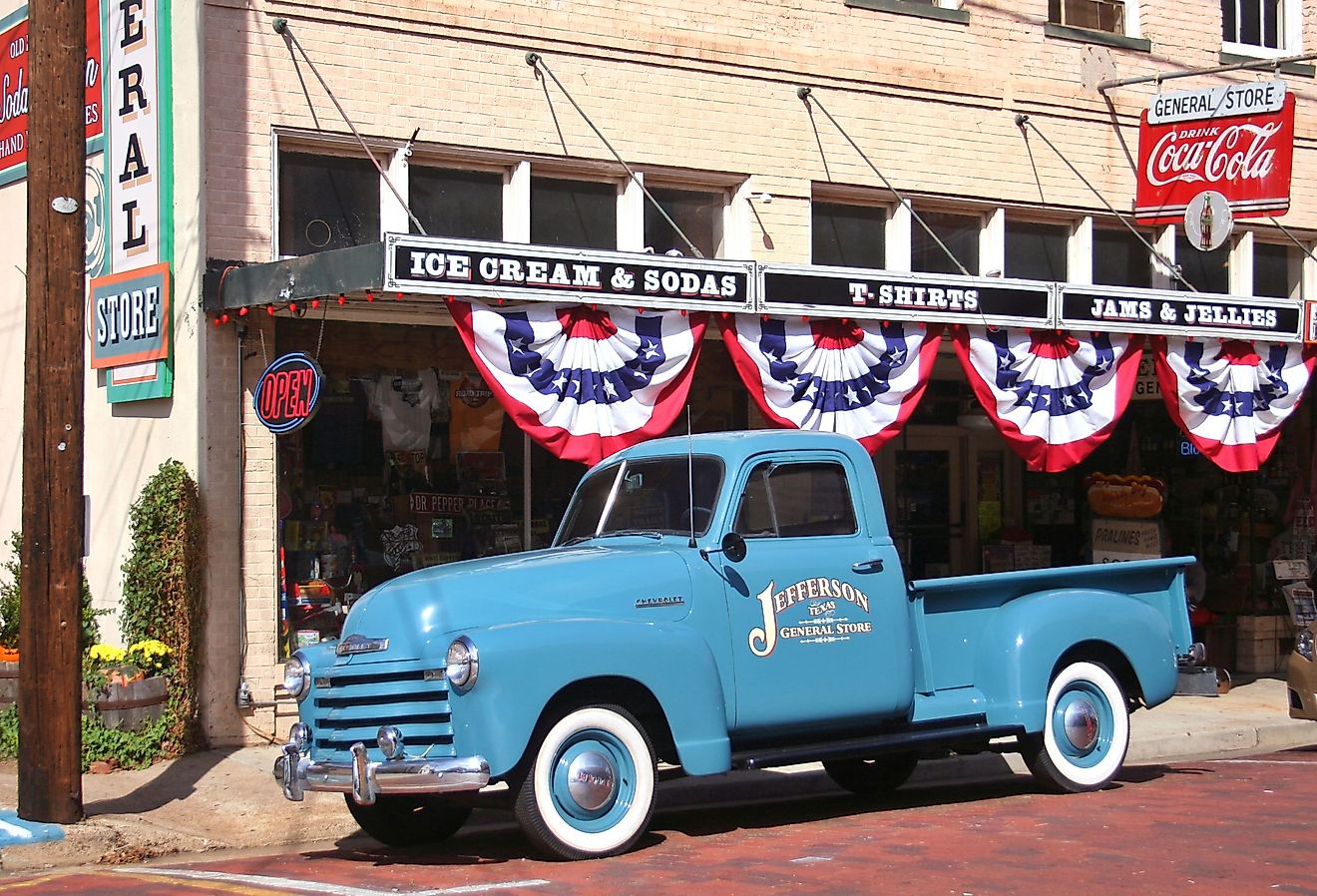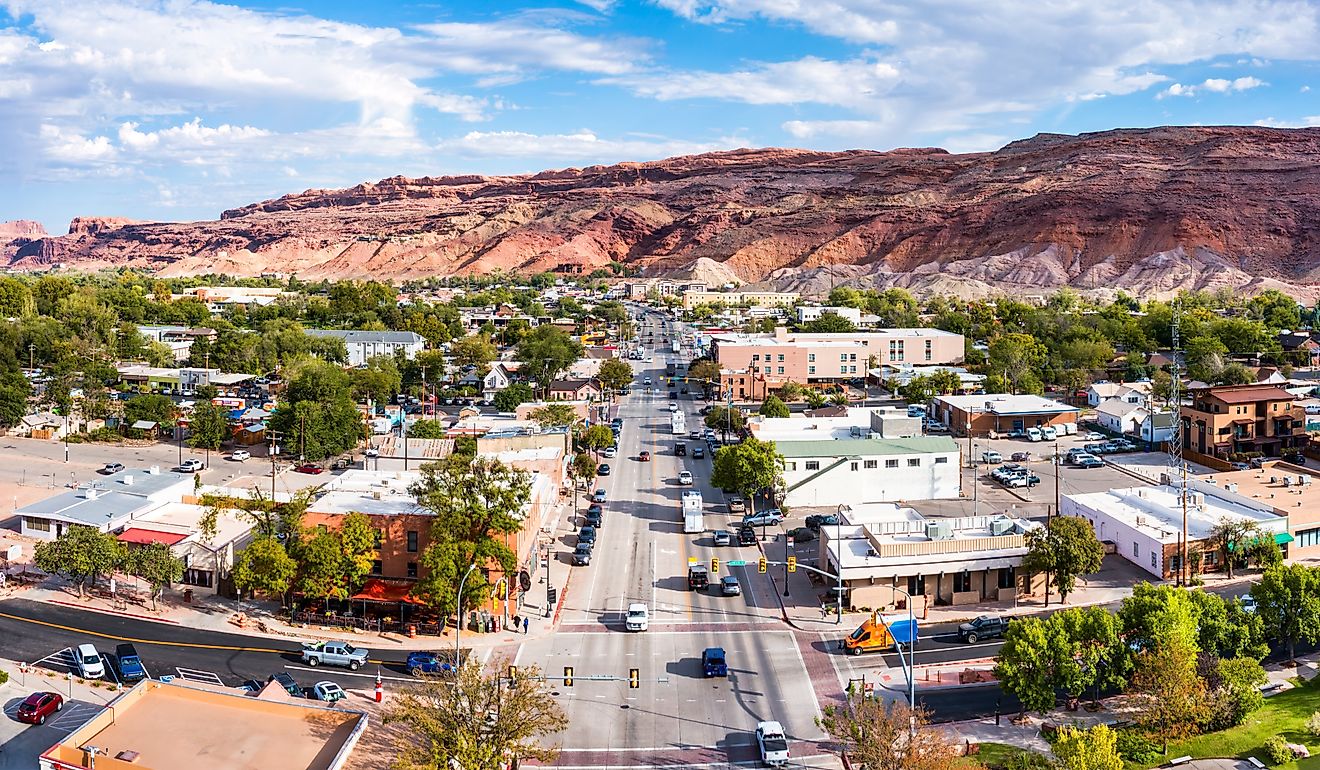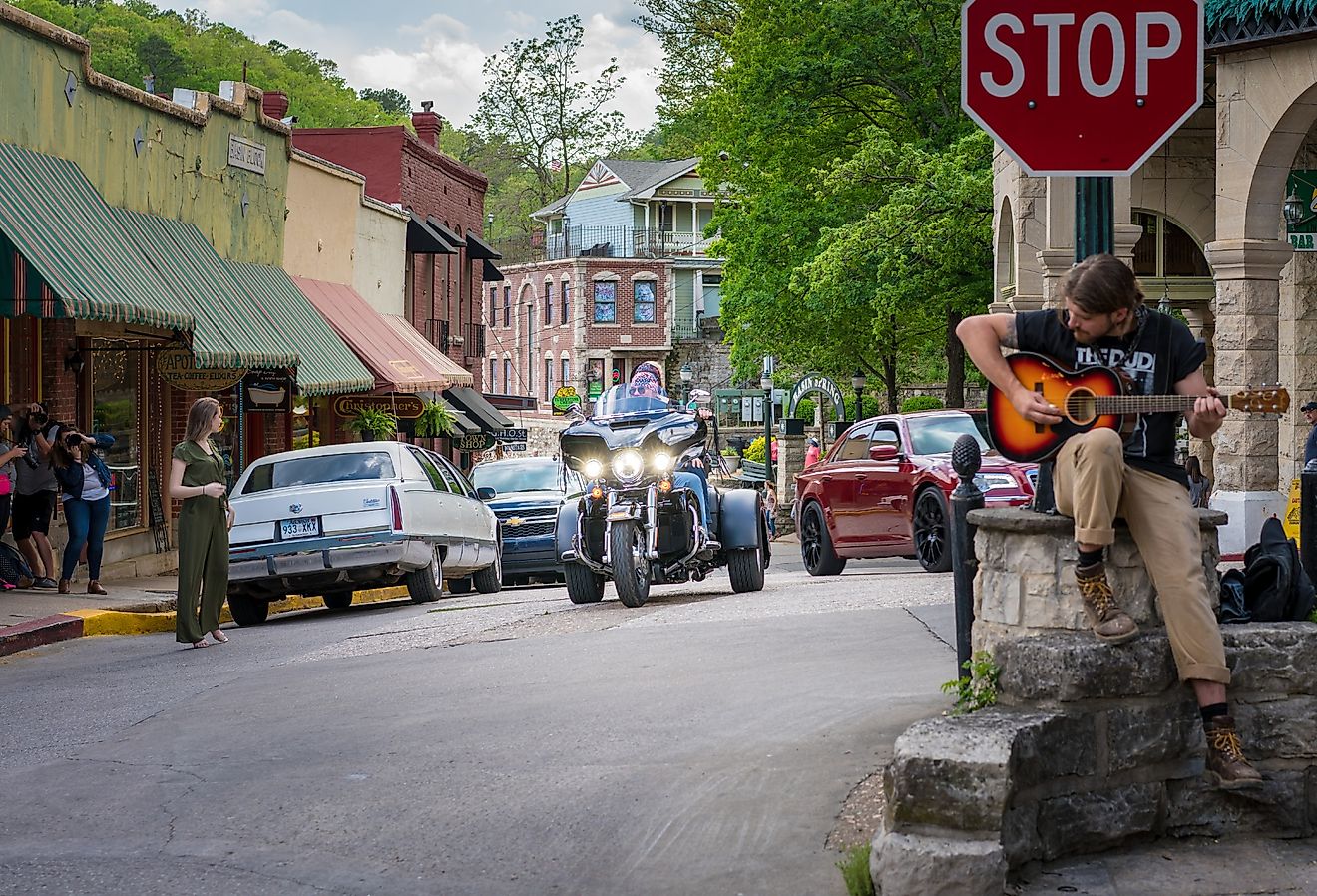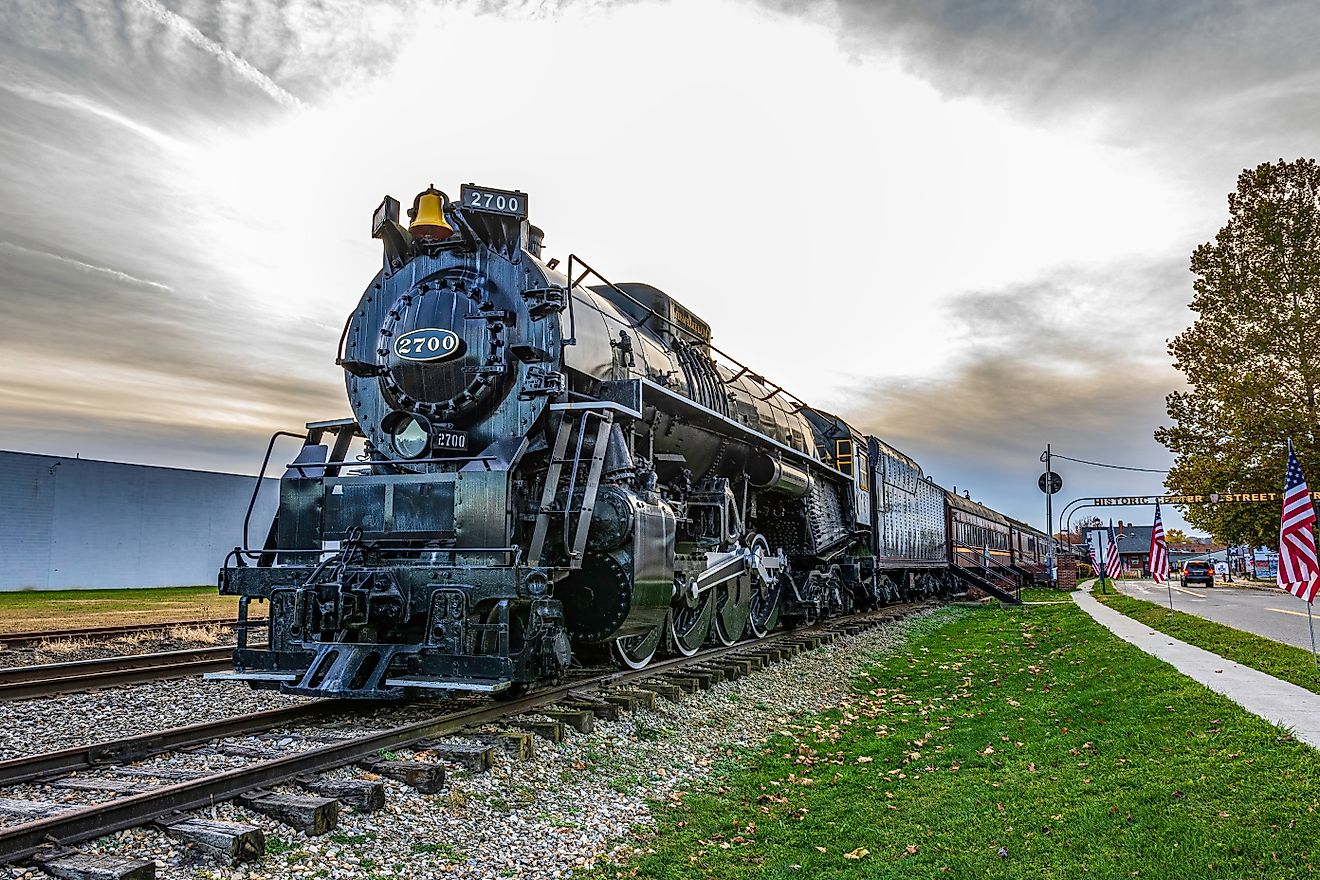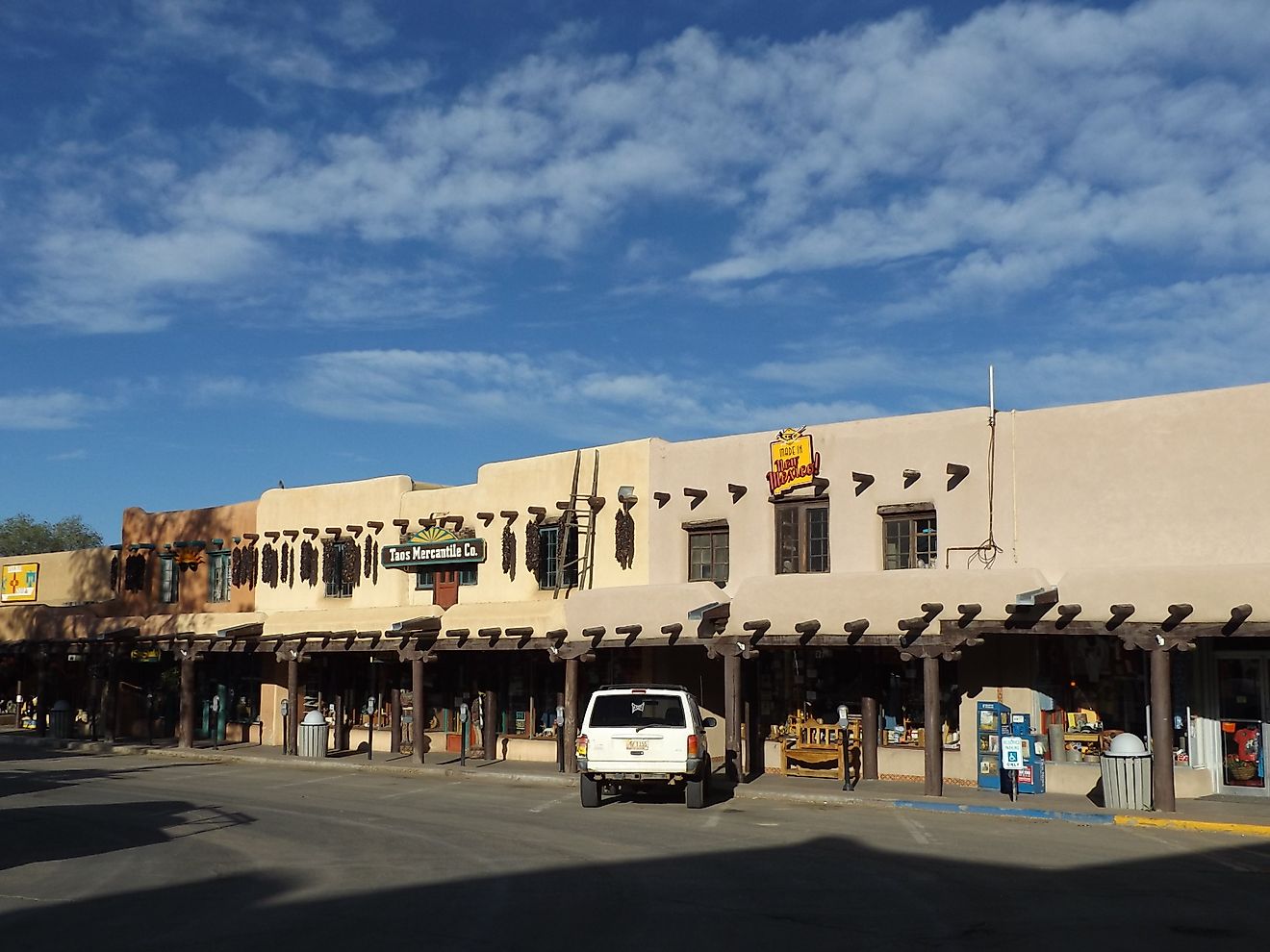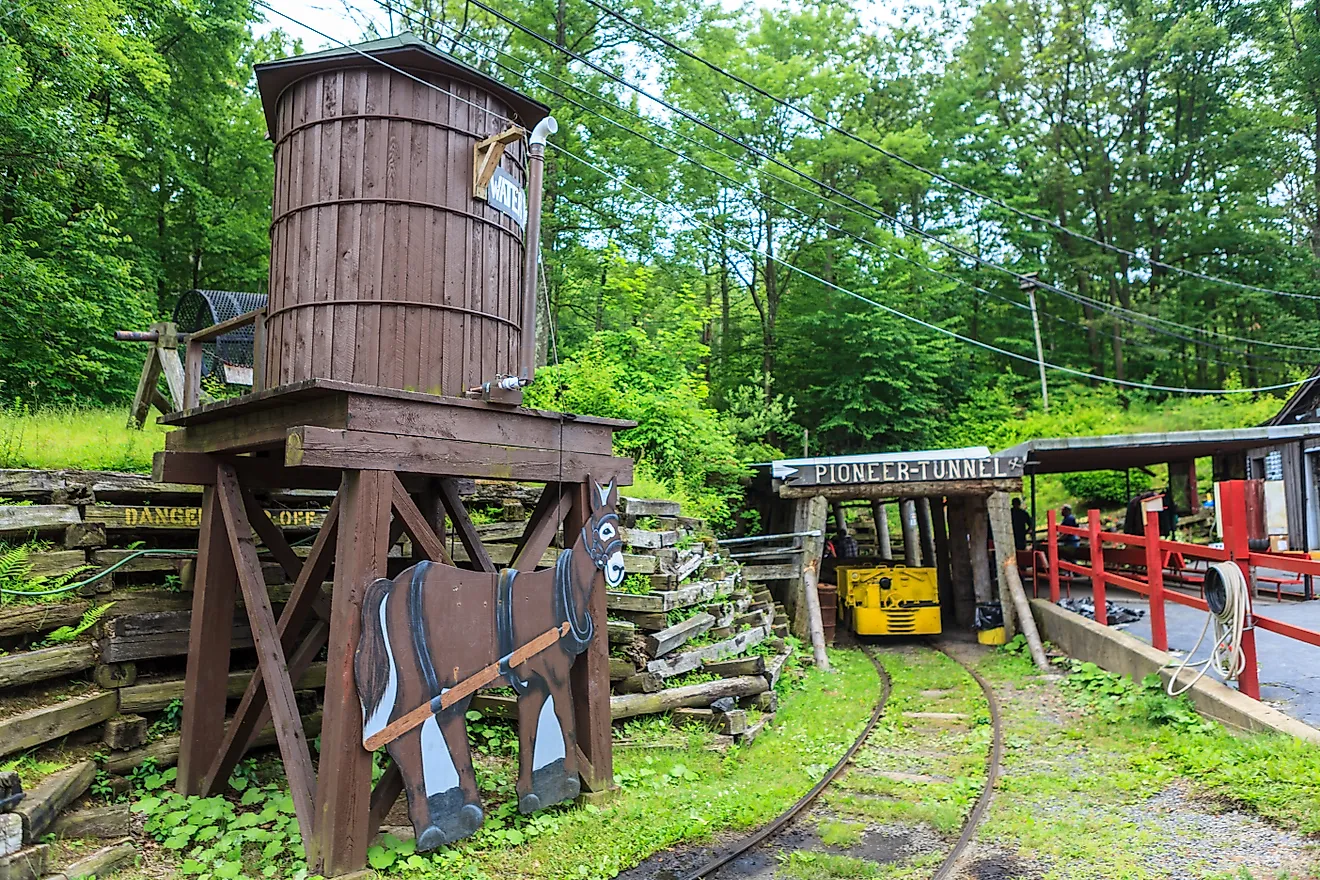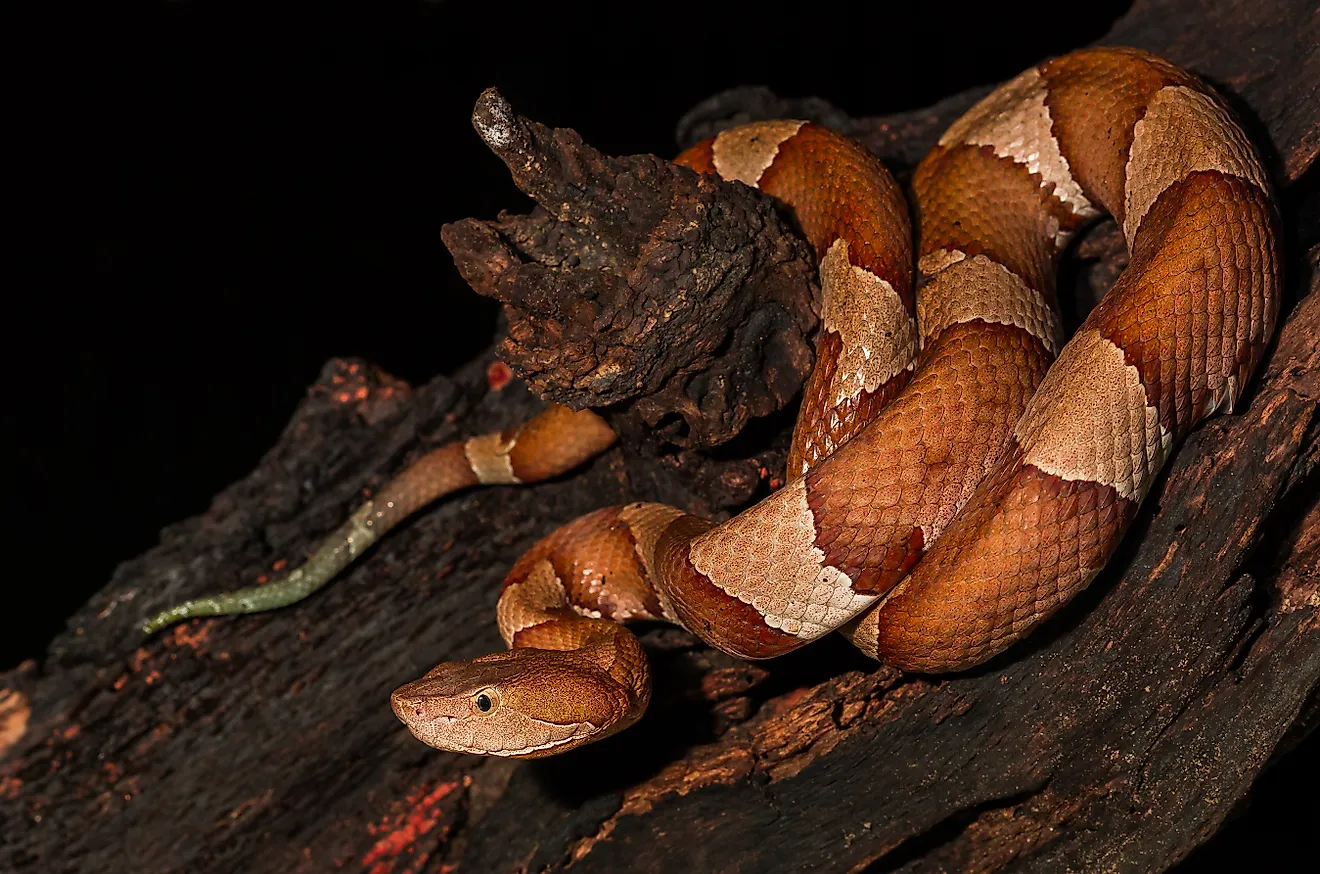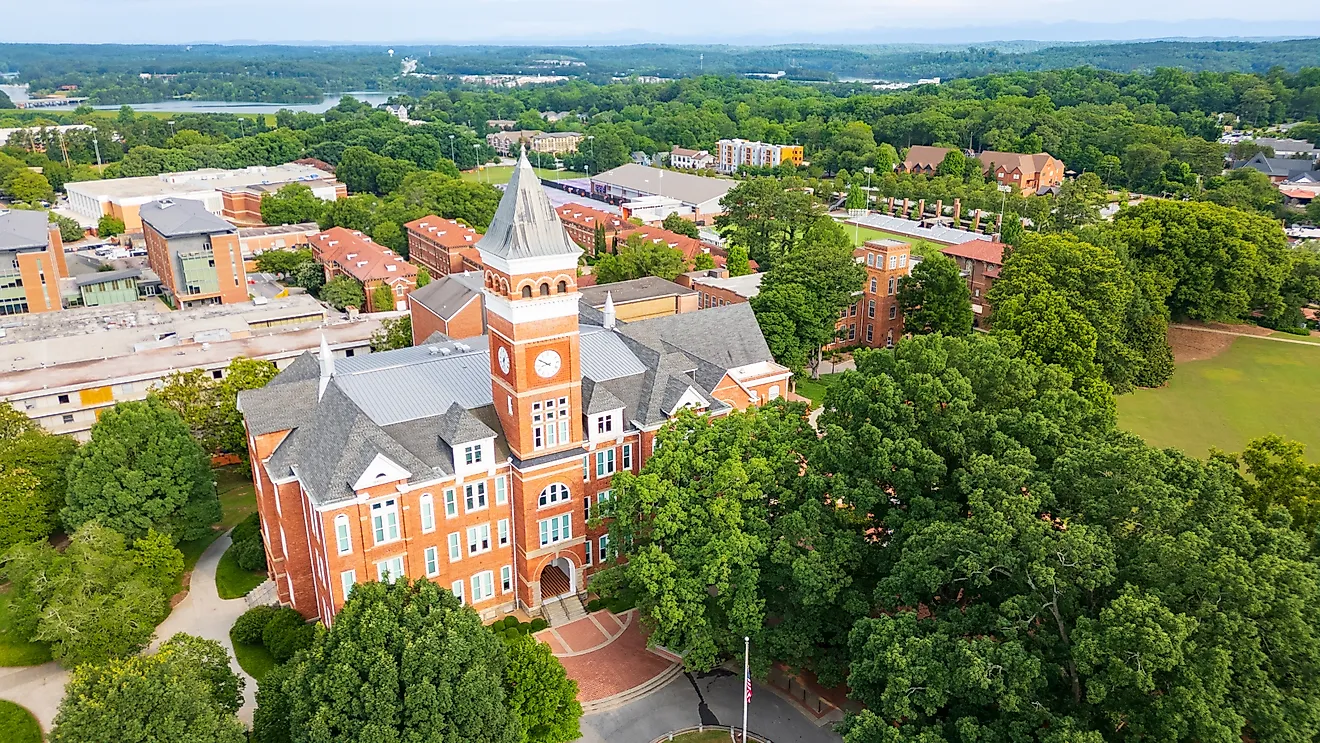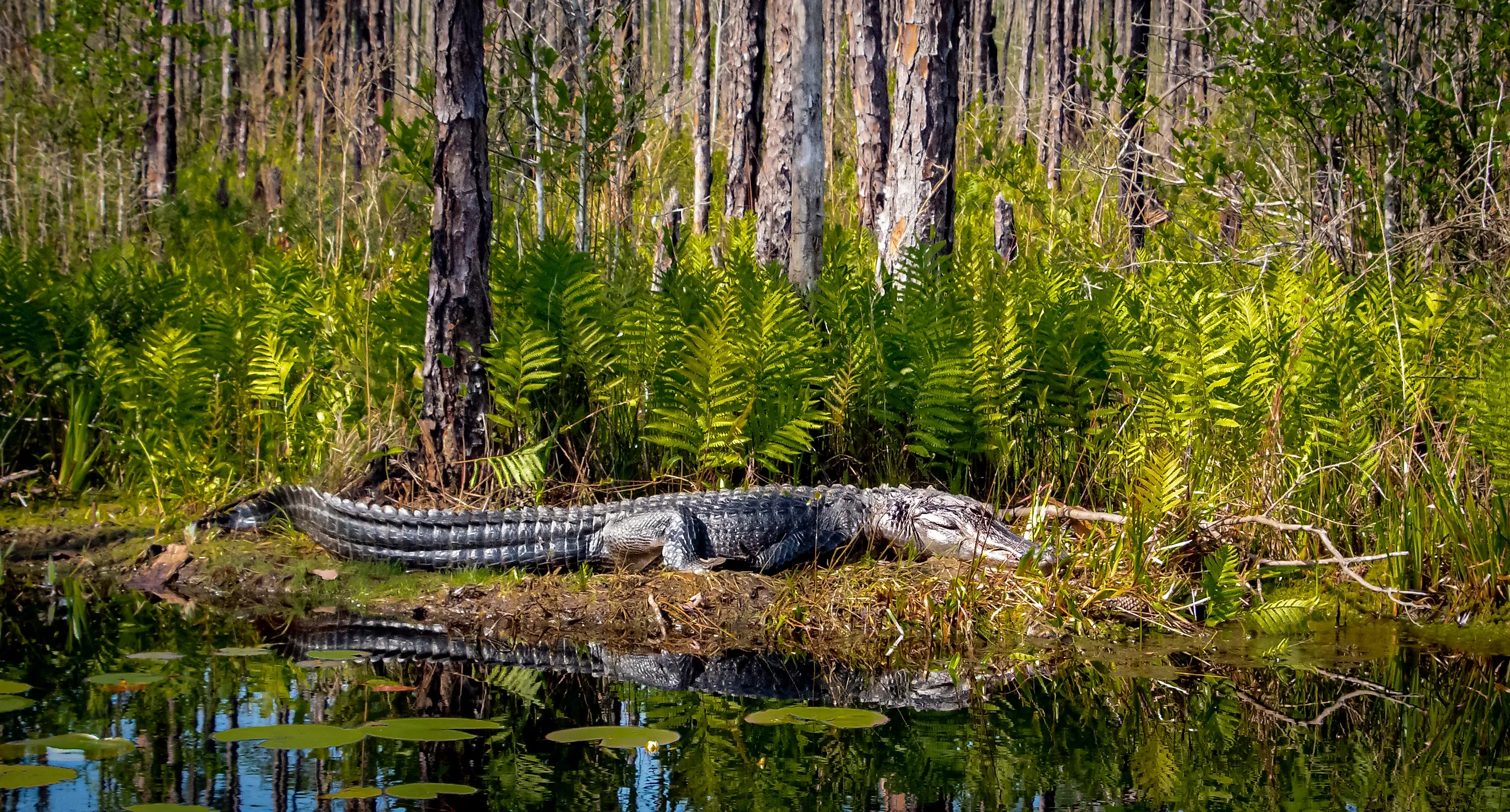
7 Most Alligator Filled Places in Georgia
Georgia's waters may look calm, but beneath the surface lurks an ancient predator: the American alligator. With their strong jaws and tough, armored bodies, these formidable reptiles thrive in the state's slow-moving waters with plenty of plants for resting and hunting. Georgia’s vast network of swamps, rivers, and lakes provides the ideal habitat for alligators. Notable locations like the Okefenokee Swamp and the Altamaha River are home to large populations, offering visitors a chance to observe these fascinating creatures in their natural environment. Exploring these areas reveals the raw beauty of Georgia’s wetlands, where alligators reign as apex predators.
Okefenokee Swamp
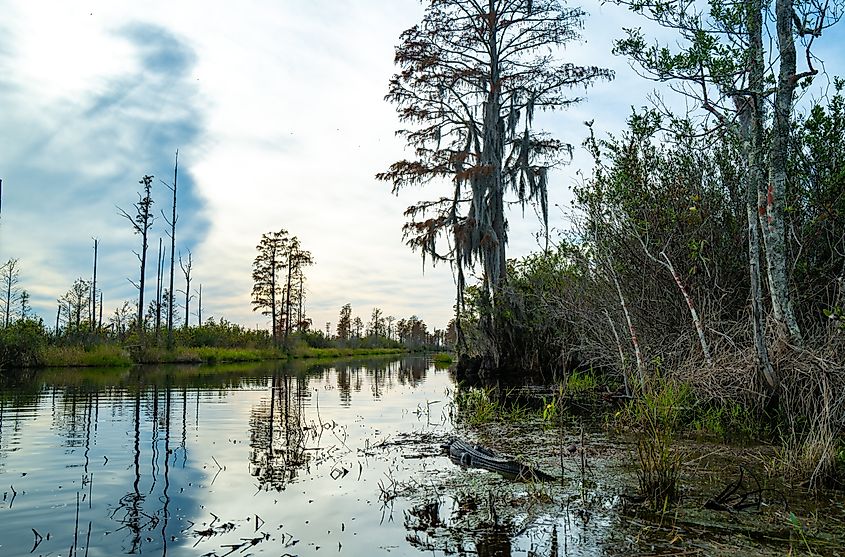
An alligator resting in serene waters surrounded by lush vegetation of Okefenokee Swamp, Georgia.
The Okefenokee Swamp is one of the largest blackwater wetlands protected by the Okefenokee National Wildlife Refuge and the Okefenokee Wilderness. Known for its dark, tannin-rich waters, lush vegetation, and abundant wildlife, it’s a hotspot for alligator sightings. With a population of around 10,000 to 13,000 alligatoris, visitors can spot them basking or gliding through the water while exploring via guided boat tours, canoeing, or kayaking. For those on foot, trails like the Chesser Island Boardwalk and the Trembling Earth Nature Trail, offer a chance to experience the swamp’s unique ecosystem—and maybe catch a glimpse of an alligator!
Lake Blackshear
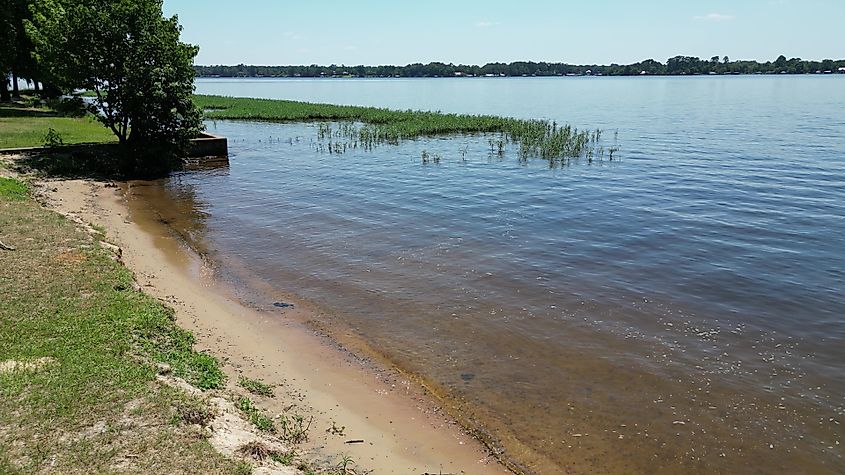
Cordele, Georgia Lake Blackshear Drone Lake Shots.
Lake Blackshear, located in central Georgia, is a popular spot for anglers and boaters. Formed by damming the Flint River, this large lake offers ideal conditions for water activities and outdoor recreation. However, the lake hosts the highest concentrations of alligators (around 10,000), drawn by its calm waters, lush vegetation, and abundant prey. In 2019, a wildlife biologist found a 13-foot, 700-pound alligator in a ditch outside Lake Blackshear.
To increase your chances of seeing these ancient reptiles, visit the shoreline near marshes and river inlets. Watch for alligators sunbathing on logs or moving through the shallow waters.
Altamaha River
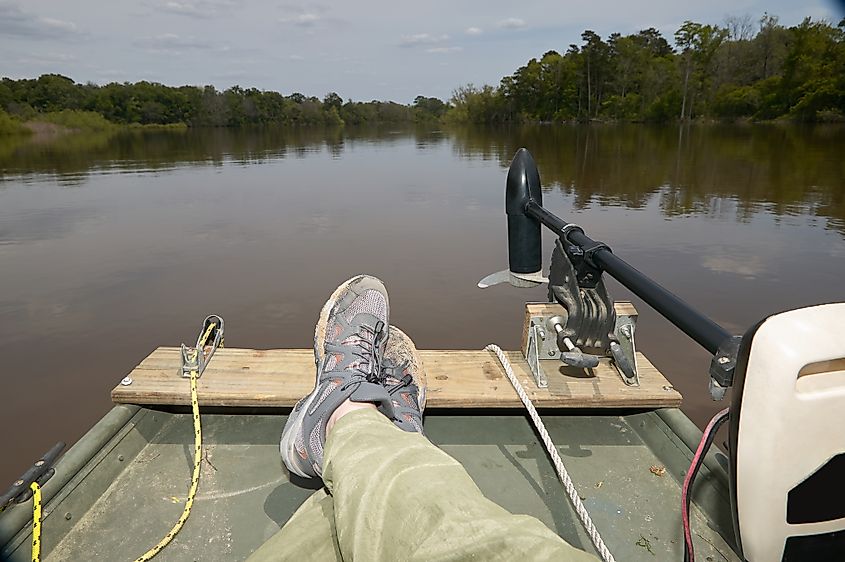
Man sitting in boat on Altamaha River during fishing, Georgia.
The Altamaha River, one of Georgia's largest waterways, formed by the confluence of the Ocmulgee and Oconee Rivers, is a prime spot for wildlife viewing, especially alligators. It's sandy hills and low-lying forests create an ideal habitat for these creatures.
While exploring the river’s banks or paddling along the scenic Altamaha River Paddling Route, you might spot alligators sunbathing or swimming through the water. The Altamaha River has a history of producing large alligators. For example, in 2017, an 11-foot, 3-inch alligator was legally hunted and taken from the river in Brunswick. In 2021, a 12-foot, 5.5-inch alligator was hunted in the river.
Lake Seminole

Lake Seminole Fishing Camp.
Lake Seminole, located between the Georgia and Florida border, is a popular destination for anglers and boaters. Created by damming the Flint River, it is also famous for its thriving alligator population and diverse aquatic ecosystem. Its slow waters, plentiful food, and ideal breeding conditions make it a perfect habitat for these ancient reptiles. The lake is also known for producing massive alligators. In 2023, Meghan Bailey of Carrollton caught a 13-foot, 3-inch gator, the largest of the season. Previous record-breaking catches include Jim Overman’s 13-foot, 10 ¾-inch alligator in 2013 and a 692-pound, 13-foot, 9-inch giant in 2010.
Phinizy Swamp Nature Park
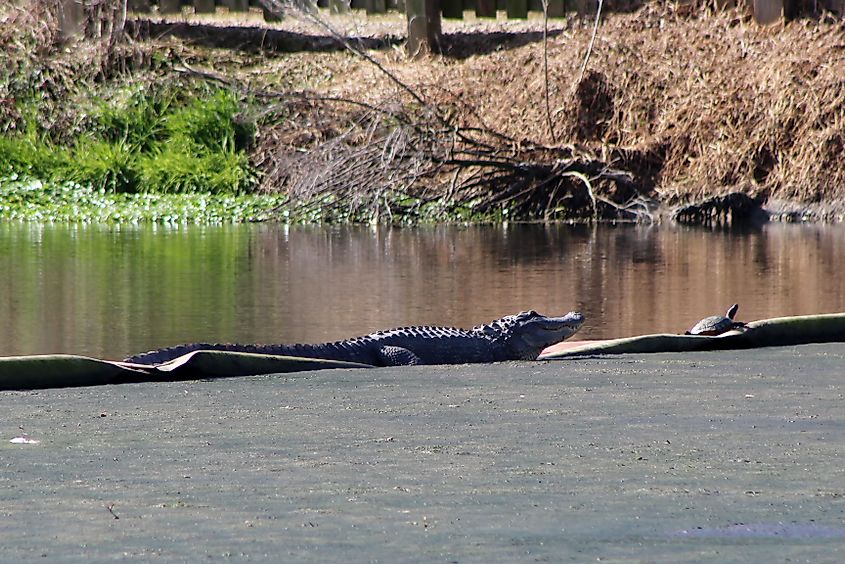
Augusta, Georgia. Alligators laying in the sun. Editorial credit: Linda Hendrickson / Shutterstock.com
Phinizy Swamp Nature Park, near Augusta, Georgia, is an excellent place to observe alligators in their natural environment while remaining safe. The park features a mix of cypress swamps, marshes, and ponds, creating an ideal habitat for these reptiles. Visitors often see alligators sunbathing near the boardwalk or swimming in the water.
The park also provides guided tours and educational programs to teach visitors about alligators and their importance to the environment. A common myth about Phinizy Swamp is that the alligators are kept in cages, but this is not true. The park is designed to allow wildlife, including alligators, to roam freely within its wetland areas.
Banks Lake National Wildlife Refuge
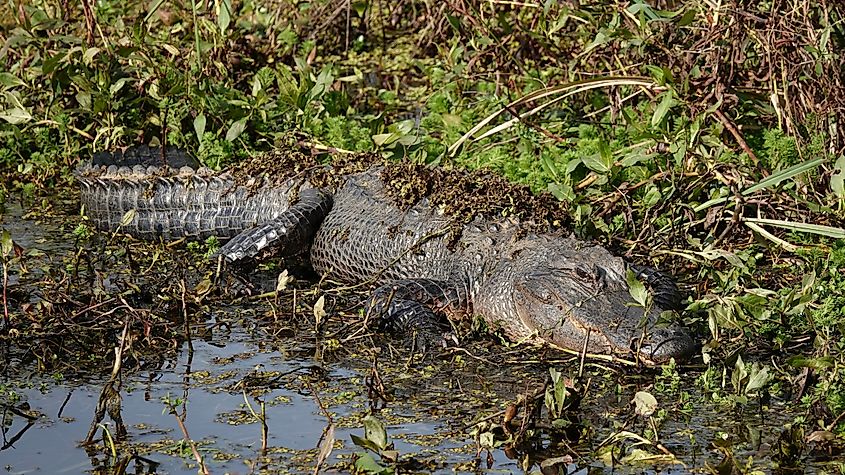
American Alligator enjoying the sunshine at the Wildlife refuge in Georgia.
Banks Lake National Wildlife Refuge, near Lakeland, Georgia, is a great place for anyone wanting to see alligators. The area has a shallow, dark-water lake surrounded by cypress trees and marshes, providing an ideal habitat for these reptiles. You can explore the waters by kayaking the Banks Paddle Lake Route or joining a guided tour. While paddling, look out for alligators sunbathing on logs or swimming just below the surface. If you prefer staying on land, you might see alligators resting on the banks or drifting in the shallow waters while hiking the Banks Lakes Trail.
Satilla River

The Satilla River on a beautiful sunny day near Woodbine, Georgia.
The Satilla River, a natural blackwater river known for its scenic beauty, flows through Georgia's coastal plain, providing an ideal habitat for alligators. Its slow-moving waters and surrounding wetlands, such as cypress swamps and tidal marshes, create a perfect environment for these reptiles.
While alligators can be seen throughout this free-flowing river, the Okefenokee National Wildlife Refuge, part of the Satilla River basin, is especially popular. Visitors can explore the area by boat, kayak, or canoe, giving them a unique view of the river’s wildlife and the alligators living there.
Conclusion
Georgia's wetlands, lakes, and rivers are home to many American alligators, offering a chance to see these amazing creatures up close. From Okefenokee Swamp to Lake Seminole, alligators play an important role in the state's natural environment. By visiting these protected areas and following safety guidelines, you can safely observe these reptiles and learn more about their role in nature. Remember, while alligators are exciting to see, it's important to stay safe and watch them from afar. Also, never feed wildlife as it could be dangerous for you and the animals.
